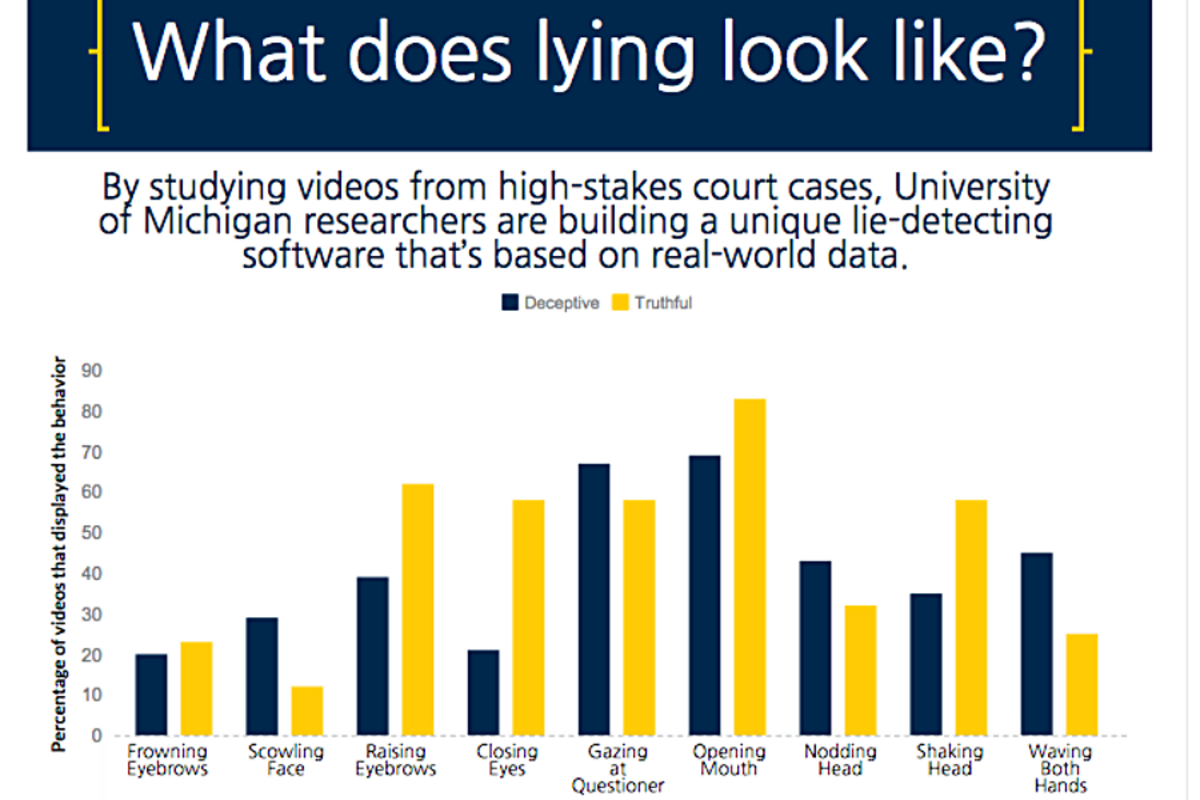How computers are getting better at detecting liars
Loading...
A group of researchers from the University of Michigan may have found a better way to detect whether you’re lying – and it’s not the polygraph test.
Using videos from high-stakes court cases, the researchers have built a lie-detecting software database that uses a person’s words and gestures to detect behavioral patterns that may be out of the norm. While the software is still being tested, it was 75 percent accurate in identifying a deceptive subject during testing. Humans were only 50 percent accurate in guessing.
The database for the software took typical “lying behavior” – individuals who moved their hands more, tried to sound more confident and looked their questioners in the eye were more likely to be lying – and was taught to recognize these patterns in humans. Using machine-learning techniques, the team trained the software on a set of 120 video clips from actual trials.
“,” said Rada Mihalcea, professor of computer science and engineering in a news release. “This isn’t the kind of task we’re naturally good at. There are clues that humans give naturally when they are being deceptive, but we’re not paying close enough attention to pick them up. We’re not counting how many times a person says ‘I’ or looks up. We’re focusing on a higher level of communication.”
A major difference between this software and other lie-detecting equipment is that subjects don’t have to be hooked up to the equipment (such as a polygraph which measures heart and breath rates) to see if they’re lying. In addition to learning body language, researchers analyzed vocal fillers, such as “um, ah, uh” to see how often subjects paused between words to see whether they were being truthful or not. Using the data collected from real human testing, the software then learned how to pick up on similar patterns. They found that, more often than not, when subjects scowled, grimaced, looked at the questioner, spoke slowly, and distanced themselves from actions words like “he” or “she” (rather than “I or we”), subjects were lying.
A key to the research has been using real-world liars instead of laboratory liars.
“In laboratory experiments, it’s difficult to create a setting that motivates people to truly lie. The stakes are not high enough. We can offer a reward if people can lie well – pay them to convince another person that something false is true. But in the real world there is true motivation to deceive," said Prof. Mihalcea.
The group hopes to carry the research forward by using thermal imaging to integrate physiological factors, including heart rate, respiration rate, and body temperature for better accuracy.





